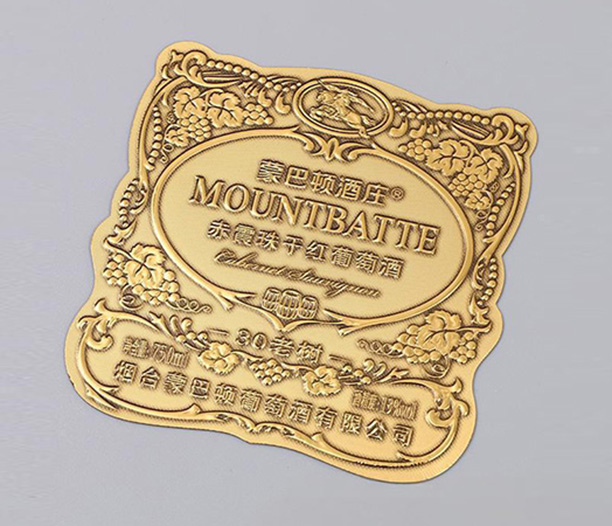In the complex world of asset management, where tools, machinery, and technology form the backbone of operations, knowing what you have, where it is, and what condition it's in is paramount. This is where inventory labels for equipment transition from simple stickers to indispensable strategic tools. Effective labeling is the cornerstone of accurate tracking, maintenance scheduling, cost control, and regulatory compliance. Whether you manage a bustling manufacturing plant, a cutting-edge laboratory, a sprawling construction fleet, or a sophisticated IT infrastructure, implementing a robust system of inventory labels for equipment is non-negotiable for operational efficiency.
This comprehensive guide delves deep into the world of inventory labels for equipment, exploring their critical importance, the various types available, best practices for implementation, and the tangible benefits they deliver.

1. The Foundational Role: Why Inventory Labels for Equipment are Non-Negotiable
Inventory labels for equipment are far more than just identifiers; they are the linchpin of a functional asset management system. Their absence leads to chaos: tools go missing, maintenance is delayed or forgotten, budgets spiral due to unnecessary replacements, and audits become nightmares. Implementing a standardized labeling system directly addresses these pain points.
Accurate Identification & Tracking: Unique identifiers on inventory labels for equipment allow you to distinguish between identical items instantly. This eliminates confusion, ensures the right equipment is used for the right job, and forms the basis for tracking location and usage history.
Enhanced Accountability: Assigning equipment to specific locations, departments, or even individuals becomes straightforward with clear labels. This fosters responsibility and reduces loss or misuse. Knowing who checked out a piece of equipment is crucial for maintenance and recovery.
Streamlined Audits & Compliance: Regulatory bodies and internal audits often require meticulous records of equipment ownership, maintenance, and calibration. Inventory labels for equipment provide the physical link to digital records, making audits faster, less disruptive, and more likely to succeed. They are essential for ISO standards, safety regulations (OSHA), and financial reporting.
Improved Maintenance & Lifespan: Preventive maintenance (PM) schedules rely on knowing what needs servicing when. Labels link physical assets to their maintenance records in your CMMS (Computerized Maintenance Management System), ensuring timely servicing. This proactive approach reduces costly breakdowns, extends asset lifespan, and maximizes uptime.
Optimized Utilization & Reduced Costs: Knowing what equipment you have and where it is prevents unnecessary purchases. Labels facilitate tracking usage patterns, helping identify underutilized assets that can be redeployed or retired, and overburdened assets that might need backup or replacement planning. This leads to significant capital and operational expenditure savings.
Loss & Theft Deterrence: Visible, tamper-evident inventory labels for equipment act as a deterrent. They clearly mark company property, making unauthorized removal more difficult and facilitating recovery if theft occurs.
2. Choosing the Right Label: Durability, Adhesion, and Information Design
Not all labels are created equal. Selecting the appropriate inventory labels for equipment is critical for their longevity and effectiveness. The label must survive the environment and usage it will encounter.
Material Durability:
Polyester (PET): Excellent resistance to chemicals, moisture, abrasion, and high temperatures. Ideal for harsh industrial environments (chemical plants, machine shops, outdoor equipment), medical devices, and assets requiring frequent cleaning.
Vinyl: A versatile and cost-effective option with good durability, water resistance, and flexibility. Suitable for less demanding indoor environments, office IT equipment, and some tools. UV-resistant vinyl is available for outdoor use.
Polypropylene (BOPP): Good moisture resistance and chemical resistance at a lower cost than polyester. Often used for indoor applications, packaging, and some asset tagging.
Metal (Aluminum, Stainless Steel): The ultimate in durability for extreme conditions – high heat (engines, ovens), harsh chemicals, abrasion, and outdoor exposure for decades. Often etched or stamped for permanence.
Tamper-Evident Materials: Special destructible vinyl or fragile paper that shatters or leaves a visible "VOID" message if removed, crucial for security-sensitive assets.
Adhesive Performance: The adhesive must bond securely to the specific surface material (metal, plastic, wood, painted surfaces) and withstand environmental factors:
Permanent Acrylic: Strong, long-lasting bond suitable for most industrial applications.
High-Tack Adhesives: For difficult-to-label surfaces like dusty, oily, or textured surfaces.
High-Temperature Adhesives: Essential for labels on engines, boilers, or other heat-generating equipment.
Removable Adhesives: For temporary tracking or situations where labels need changing frequently (less common for permanent equipment inventory).
Information Design & Clarity: The label must convey essential information clearly and durably:
Human-Readable Data: Unique Asset ID, Asset Name/Description, Barcode/QR Code number, Company Name, Department/Location, possibly serial number or acquisition date. Use clear, sans-serif fonts and sufficient font size.
Machine-Readable Data: Barcodes (linear, 2D like Data Matrix or QR codes) are essential for efficient scanning and integration with asset management software. Ensure the barcode size and symbology are appropriate for the scanning distance and environment.
Layout: Organize information logically. Prioritize the Asset ID and Barcode for quick scanning. Use color coding if helpful for categories or departments.
Printing Technology: Thermal Transfer printing (using resin or wax-resin ribbons) is the standard for durable, long-lasting inventory labels for equipment. It produces smudge-proof, chemical-resistant images. Direct Thermal is cheaper but fades with heat/light exposure and is generally unsuitable for permanent asset labels. Laser printing on specialty label sheets is an option for less demanding environments but may lack the durability of thermal transfer.
3. Barcodes, QR Codes, and RFID: The Technology Powering Modern Equipment Labels
Inventory labels for equipment have evolved far beyond simple numbers. Integrating scanning technology transforms labels into powerful data gateways.
Barcodes (Linear & 2D):
Linear Barcodes (UPC, Code 128, Code 39): Encode data in varying widths of parallel lines. Efficient and cost-effective for basic identification and tracking. Require line-of-sight scanning. Code 128 is highly reliable and commonly used in asset tracking.
2D Barcodes (Data Matrix, QR Code): Store data horizontally and vertically, packing significantly more information (hundreds of characters) into a smaller space than linear codes. They can encode URLs, detailed equipment specs, maintenance history links, or even entire work orders. Highly robust – can be read even if partially damaged. QR codes are easily scanned by smartphones, facilitating wider access. Essential for modern, data-rich inventory labels for equipment.
Radio Frequency Identification (RFID):
How it Works: Uses radio waves to automatically identify and track tags attached to objects. An RFID reader emits a signal that activates a tiny chip (tag) on the label, which then transmits its unique data back to the reader. No line-of-sight is required.
Tags: Can be passive (powered by the reader's signal, shorter range) or active (battery-powered, longer range). Integrated into durable labels.
Benefits for Equipment Labels: Revolutionizes inventory counts – entire rooms or containers of tagged equipment can be scanned in seconds without visual access. Enables real-time location tracking (RTLS) with specialized readers. Highly efficient for auditing large quantities of assets quickly. Excellent for tracking assets stored in cabinets, on crowded shelves, or moving on vehicles.
Considerations: Higher cost per tag than barcodes. Requires investment in readers and software infrastructure. Metal or liquid environments can interfere with signals (specific tag types mitigate this). RFID represents the cutting edge of inventory labels for equipment, offering unparalleled speed and automation.

4. Implementing a Successful Equipment Labeling System: Best Practices
Rolling out effective inventory labels for equipment requires careful planning and execution. Rushing leads to inconsistency and failure.
Define Your Objectives & Scope: What problems are you solving? (Reducing loss? Improving maintenance? Passing audits?) What types of equipment will be labeled? (Everything? Only high-value items?) Define your goals clearly.
Develop a Standardized Naming Convention: Create a unique, logical, and consistent numbering system for your Asset IDs (e.g., DEPT-TYPE-SEQ: MECH-PRESS-001). Document this convention thoroughly.
Select the Optimal Label Type & Technology: Based on your environment, surfaces, required data, and budget, choose the right material, adhesive, and data encoding (Barcode, QR, RFID). Consider future needs (e.g., potential RFID upgrade).
Design the Label Template: Determine the essential data fields. Prioritize readability and scannability. Ensure barcode/QR size meets scanner requirements. Include your company name/logo. Test prototypes on actual equipment surfaces.
Choose & Populate Your Asset Management Software: Your labels are only as good as the data behind them. Select a CMMS or asset tracking software before labeling. The software generates the unique IDs and associated data records. Ensure it supports your chosen label technology (barcode/RFID scanning).
Prepare Equipment Surfaces: Clean surfaces thoroughly (remove dirt, oil, grease) to ensure proper label adhesion. Use appropriate cleaning solvents. For rough surfaces, consider primers.
Apply Labels Consistently: Define where on each type of equipment labels should be placed (visible, accessible, avoiding wear points or moving parts). Use templates or jigs if necessary for uniform placement. Apply labels firmly, smoothing out air bubbles.
Populate Your Database: As each item is labeled, scan the barcode/QR/RFID tag and enter all relevant data into your asset management system (description, serial number, model, location, custodian, purchase date, cost, warranty info, vendor, etc.). This is the most crucial step!
Train Your Team: Educate all relevant personnel (maintenance, operations, IT, finance, auditors) on the purpose of the labels, how to scan them, how to look up information, and the importance of not removing or damaging them. Explain the procedures for checking equipment in/out or reporting moves.
Establish Ongoing Processes: Define who is responsible for applying labels to new equipment. Implement procedures for updating the database when equipment moves, is serviced, is decommissioned, or when label damage occurs. Schedule regular audits using the labels to verify location and condition.
5. Overcoming Common Challenges with Equipment Inventory Labels
Even well-planned implementations face hurdles. Anticipate and address these common challenges with inventory labels for equipment:
Harsh Environments: Extreme temperatures, chemicals, UV exposure, moisture, abrasion, and oils can destroy standard labels.
Solution: Invest in durable materials (polyester, metal) and adhesives specifically engineered for the environment. Use protective overlaminates.
Surface Compatibility: Labels won't stick reliably to dusty, oily, greasy, textured, or curved surfaces.
Solution: Rigorous surface preparation (cleaning, potentially using primers). Select high-tack adhesives designed for difficult surfaces. Consider alternative attachment methods (mechanical tags, cable ties for labels) if adhesion is impossible.
Label Damage & Wear: Physical impact, frequent handling, cleaning chemicals, and general wear and tear can obscure information or destroy the label.
Solution: Use durable materials (polyester, metal). Apply labels in protected locations if possible. Use protective overlaminates. Implement a process for inspecting and replacing damaged labels promptly. Leverage 2D barcodes which are more damage-tolerant.
Tampering and Removal: Deliberate removal by staff or theft attempts.
Solution: Use tamper-evident labels that self-destruct or leave a clear "VOID" mark. Combine labeling with physical security measures. Foster a culture of accountability. RFID tags can be hidden within equipment.
Database Inaccuracy: Labels are only useful if the data in the asset management system is accurate and up-to-date. Neglecting updates renders the system useless.
Solution: Assign clear ownership for data maintenance. Integrate label scanning into core processes (maintenance work orders, check-in/check-out, audits). Train staff thoroughly on the importance of data accuracy. Conduct regular audits.
Resistance to Change: Employees may see labeling as an unnecessary burden or "big brother" monitoring.
Solution: Communicate the benefits clearly – how it makes their jobs easier (finding tools faster, proving equipment wasn't lost on their watch), improves safety (ensuring calibrated/tested equipment), and benefits the organization (saving money for raises/bonuses). Involve key users in the planning process.
6. Beyond the Basics: Advanced Applications and Benefits
Implementing inventory labels for equipment unlocks capabilities beyond simple tracking:
Integration with Maintenance Systems (CMMS/EAM): Scanning a label instantly pulls up the asset's complete maintenance history, manuals, and open work orders. Technicians can scan the label to start/complete a work order, ensuring accurate labor and parts tracking against the correct asset.
Warranty & Lease Management: Track warranty expiration dates and lease terms efficiently by linking them to the labeled asset. Receive alerts before warranties expire to schedule final inspections or claims.
Depreciation & Financial Reporting: Accurate asset registers linked to labels provide reliable data for calculating depreciation, insurance valuations, and financial audits.
Calibration & Certification Tracking: Critical for lab equipment, safety gear, and measuring tools. Labels link to calibration schedules and certificates, ensuring compliance and preventing the use of out-of-calibration equipment.
Mobile Workforce Enablement: Field technicians can use smartphones or rugged tablets to scan equipment labels on-site, accessing information, logging service activities, and updating records in real-time, eliminating paperwork and delays.
Lifecycle Cost Analysis: Track total cost of ownership (purchase, maintenance, repairs, downtime) for individual assets or classes of equipment, enabling better future purchasing decisions.
Real-Time Location Systems (RTLS): Using active RFID or BLE (Bluetooth Low Energy) tags integrated into labels, organizations can monitor the real-time location of high-value or critical mobile assets across a facility or campus.
7. The Tangible ROI: Justifying Your Investment in Equipment Labels
While there are upfront costs associated with purchasing durable inventory labels for equipment, software, and scanners, the return on investment (ROI) is substantial and multi-faceted:
Reduced Equipment Loss & Replacement Costs: Knowing what you have and where it is drastically reduces misplaced or lost assets. Studies show companies lose significant capital annually due to unaccounted-for equipment.
Lower Maintenance Costs & Increased Uptime: Proactive, scheduled maintenance based on actual usage (trackable via scans) prevents catastrophic failures, reduces emergency repair costs, and maximizes equipment availability for production or operations.
Improved Labor Efficiency: Technicians spend less time searching for tools or equipment. Audits and inventory counts are exponentially faster with barcode or RFID scanning. Data entry errors are minimized.
Avoided Compliance Fines & Failed Audits: Meeting regulatory requirements for equipment tracking and maintenance history prevents costly fines and operational disruptions.
Optimized Asset Utilization: Identifying underused assets allows for redeployment or disposal, freeing up capital and space. Preventing unnecessary purchases.
Enhanced Decision Making: Accurate data on equipment performance, costs, and lifespan supports strategic decisions about repairs, replacements, and capital investments.
Improved Safety: Ensuring critical safety equipment is present, calibrated, and inspected.
Inventory labels for equipment are not merely stickers; they are the critical physical link between your valuable assets and the digital systems that manage their lifecycle. They transform anonymous objects into tracked, managed, and optimized resources. From simple identification to enabling cutting-edge technologies like RFID and real-time analytics, a well-designed and implemented labeling system delivers profound operational and financial benefits.
Ignoring the power of inventory labels for equipment means accepting inefficiency, unnecessary costs, compliance risks, and suboptimal asset performance. By investing in the right labels, technology, and processes tailored to your specific needs, you unlock visibility, control, and intelligence over your equipment fleet, driving tangible value across your entire organization. The foundation for smarter asset management starts with that label.





